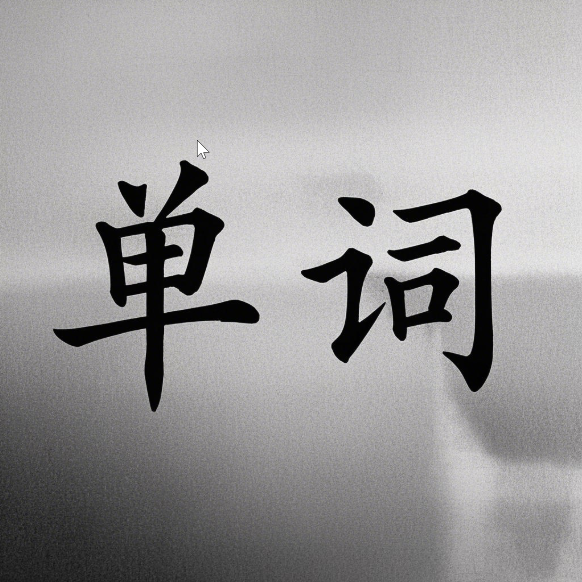pseudomorph
简明释义
英[ˈsjuːdə(ʊ)mɔːf]美[ˈsjʊdəmɔrf]
n. 伪形;假象;[土壤] 假晶
英英释义
单词用法
矿物的伪晶 | |
在另一种物种之后的伪晶 | |
伪晶形成 | |
伪晶替代 |
同义词
| 模仿 | 这位艺术家创作了一幅著名画作的模仿品。 | ||
| 复制品 | 博物馆展出了这件古代文物的复制品。 | ||
| 伪造品 | 伪造的钞票很快被收银员发现了。 | ||
| 摹本 | 他把文件的摹本发给了他的同事。 |
反义词
例句
1.Only then like this, in the exercise pseudomorph condition only then can approach the accident condition gradually, when true crisis eruption, only then possibly maximum limit reduces the loss.
只有这样,演习中的假象状态才会逐渐接近事故状态,在真正的危机爆发时,才可能最大限度地减少损失。
2.Coesite (pseudomorph) inclusions is first discovered in hypostheny which reflect a well - developed radial cracks.
在紫苏辉石中首次发现柯石英假像的包体,显示清晰的放射状胀裂纹结构。
3.Although the cumulative dip plot method can improve resolution of fine dip variation, it will induce pseudomorph as sampling is not even in depth.
累积倾角交汇图法可以提高对倾角细微变化的分辨率,但在取样深度不均匀时容易产生假象;
4.Only then like this, in the exercise pseudomorph condition only then can approach the accident condition gradually, when true crisis eruption, only then possibly maximum limit reduces the loss.
只有这样,演习中的假象状态才会逐渐接近事故状态,在真正的危机爆发时,才可能最大限度地减少损失。
5.In geology, a pseudomorph is often used to describe a mineral that has taken the shape of another mineral.
在地质学中,伪晶通常用于描述一种矿物呈现出另一种矿物的形状。
6.The mineral sample displayed a stunning pseudomorph, where quartz had replaced calcite, creating an intricate structure.
这个矿物样本展示了惊人的伪晶,其中石英取代了方解石,形成了复杂的结构。
7.The artist created a sculpture that resembled a pseudomorph by layering different materials to mimic natural forms.
这位艺术家创作了一件雕塑,类似于伪晶,通过分层不同的材料来模仿自然形态。
8.During the field trip, we discovered a pseudomorph of pyrite that had transformed from another mineral.
在实地考察中,我们发现了一个从另一种矿物转变而来的伪晶黄铁矿。
9.The pseudomorph of gypsum after anhydrite is a classic example of mineral replacement.
石膏对无水石膏的伪晶是矿物替代的经典例子。
作文
In the world of geology and mineralogy, the term pseudomorph refers to a mineral that has taken on the external form of another mineral. This fascinating phenomenon occurs when one mineral replaces another while retaining the original mineral's shape. The word itself is derived from the Greek roots 'pseudo,' meaning false, and 'morph,' meaning form. Thus, a pseudomorph can be thought of as a 'false form.' Understanding pseudomorphs is crucial for geologists as they provide insights into the conditions under which minerals formed and transformed over time.An example of a pseudomorph is when the mineral pyrite, commonly known as fool's gold, undergoes a transformation into limonite. In this case, the pyrite crystals dissolve, and the limonite takes on the shape of the original pyrite crystals. This process not only preserves the external appearance but also tells a story about the environmental conditions that led to such a transformation. The study of pseudomorphs helps geologists understand the history of mineral deposits and the geological processes that have occurred over millions of years.The significance of pseudomorphs extends beyond geology; it also finds applications in various fields such as art and archaeology. For instance, ancient artisans often used pseudomorphs in their works, creating sculptures or decorative pieces that mimic the appearance of more valuable materials. These pseudomorphs served not only aesthetic purposes but also allowed artisans to showcase their skills in manipulating materials.Moreover, the concept of pseudomorph can be metaphorically applied to other fields, such as psychology and sociology. In these contexts, a pseudomorph might represent a situation where an individual or group adopts the external characteristics of another entity while lacking the inherent qualities that define them. For example, in social dynamics, a person might imitate the behaviors and appearances of a particular group without genuinely embodying their values or beliefs. This imitation can lead to superficial connections and misunderstandings, mirroring the geological process where one mineral superficially resembles another without sharing its intrinsic properties.In conclusion, the concept of pseudomorph offers a rich tapestry of meanings across different domains. In geology, it serves as a window into the past, revealing the transformative processes that shape our planet. In art and archaeology, it highlights human creativity and the desire to replicate beauty. Furthermore, in psychology and sociology, it warns us about the dangers of superficiality and the importance of authenticity. By exploring the multifaceted nature of pseudomorphs, we gain deeper insights into both the natural world and human behavior, reminding us that appearances can be deceiving, whether in minerals or in life itself.
在地质学和矿物学的世界中,术语伪晶指的是一种矿物,它采用了另一种矿物的外部形态。这种迷人的现象发生在一种矿物替代另一种矿物的过程中,同时保留了原始矿物的形状。这个词本身源于希腊语词根“pseudo”,意为假,而“morph”意为形态。因此,伪晶可以被视为一种“虚假的形态”。理解伪晶对地质学家至关重要,因为它们提供了关于矿物形成和转化条件的见解。一个伪晶的例子是,当矿物黄铁矿(通常被称为愚人金)转变为褐铁矿时。在这种情况下,黄铁矿晶体溶解,褐铁矿则呈现出原始黄铁矿晶体的形状。这个过程不仅保留了外观,还讲述了导致这种转变的环境条件的故事。研究伪晶有助于地质学家了解矿床的历史以及数百万年来发生的地质过程。伪晶的重要性超越了地质学;它还在艺术和考古等多个领域找到了应用。例如,古代工匠常常在他们的作品中使用伪晶,创造出模仿更有价值材料外观的雕塑或装饰品。这些伪晶不仅具有美学目的,还展示了工匠在操控材料方面的技能。此外,伪晶的概念可以隐喻性地应用于其他领域,如心理学和社会学。在这些背景下,伪晶可能代表一种情况,其中个人或群体采纳了另一实体的外部特征,但缺乏定义它们的内在品质。例如,在社会动态中,一个人可能模仿某个特定群体的行为和外表,却没有真正体现他们的价值观或信仰。这种模仿可能导致肤浅的联系和误解,反映了地质过程,其中一种矿物表面上类似于另一种矿物,但并不共享其内在属性。总之,伪晶的概念在不同领域提供了丰富的意义。在地质学中,它作为通往过去的窗口,揭示了塑造我们星球的转化过程。在艺术和考古学中,它突显了人类的创造力和复制美的愿望。此外,在心理学和社会学中,它警示我们肤浅的危险和真实性的重要性。通过探索伪晶的多面性,我们深入了解自然界和人类行为,提醒我们无论是在矿物还是生活中,外表可能是具有欺骗性的。
